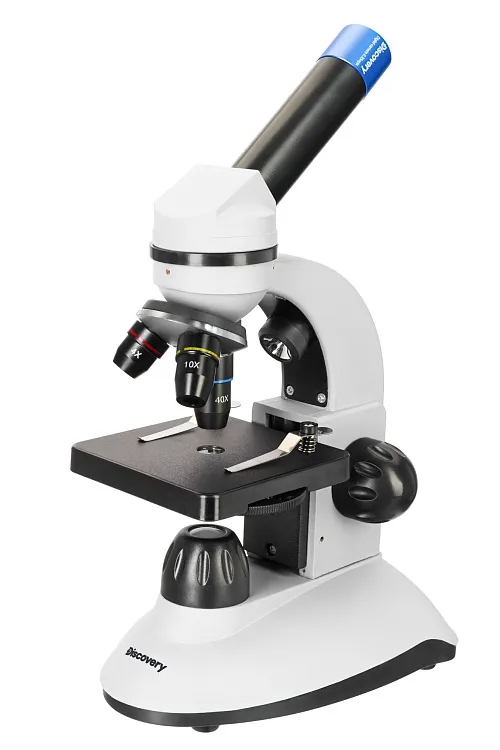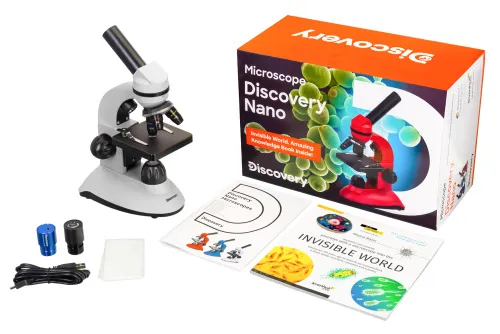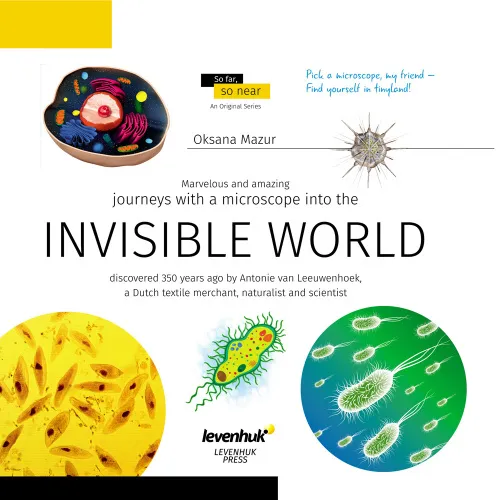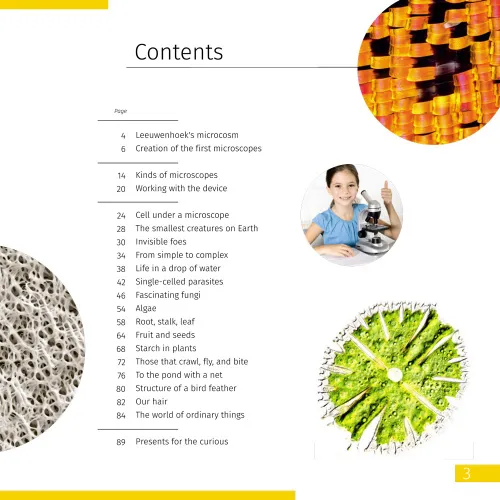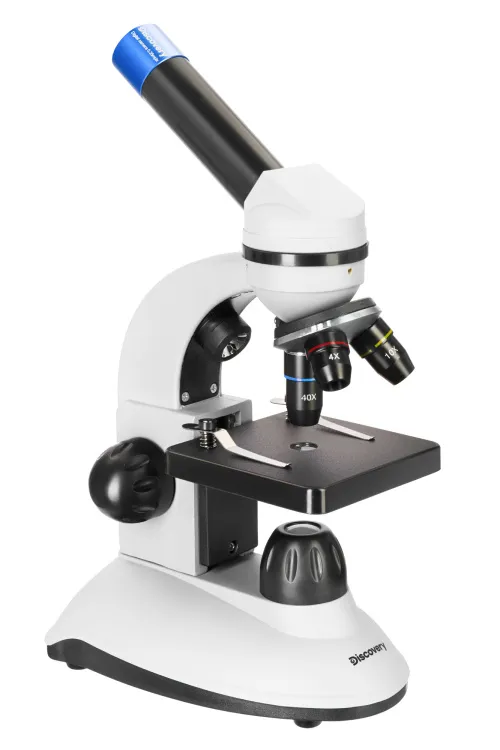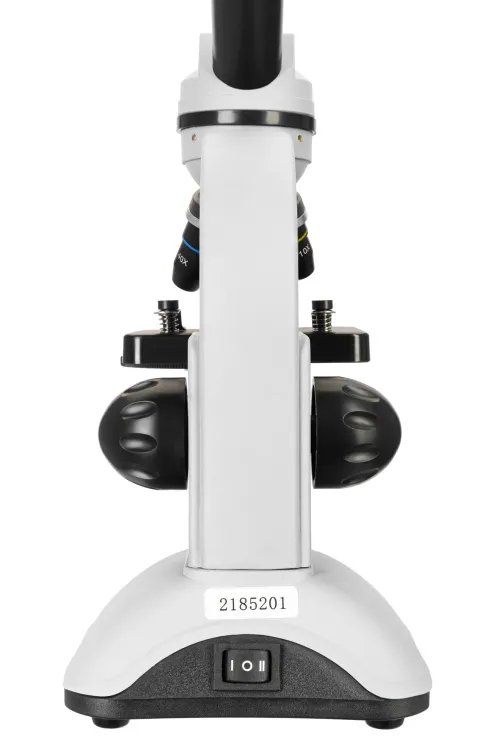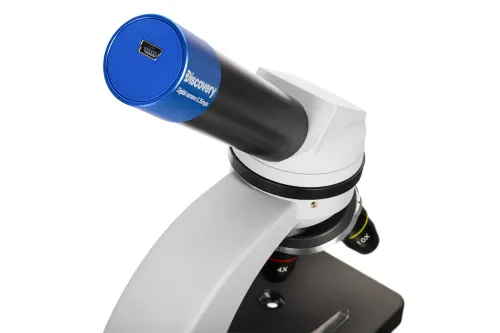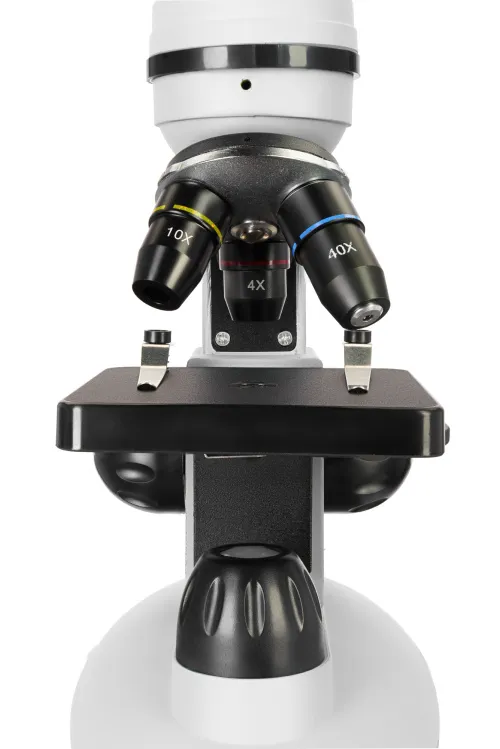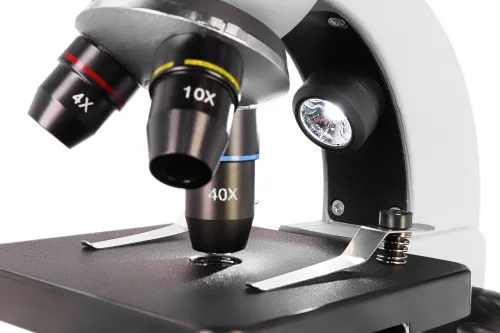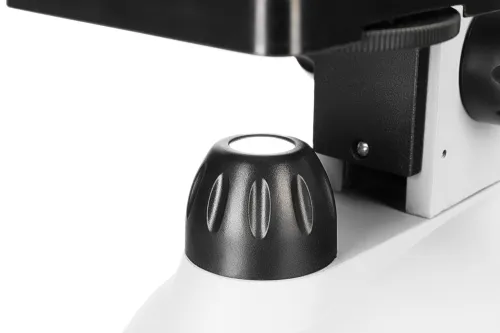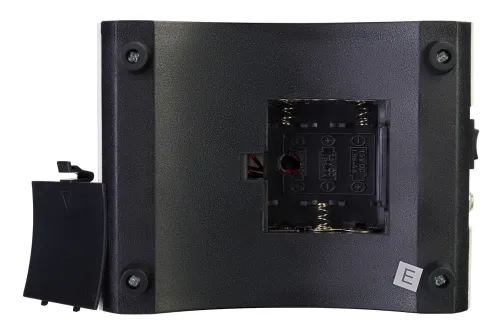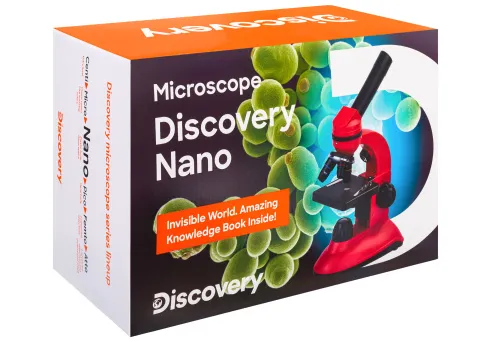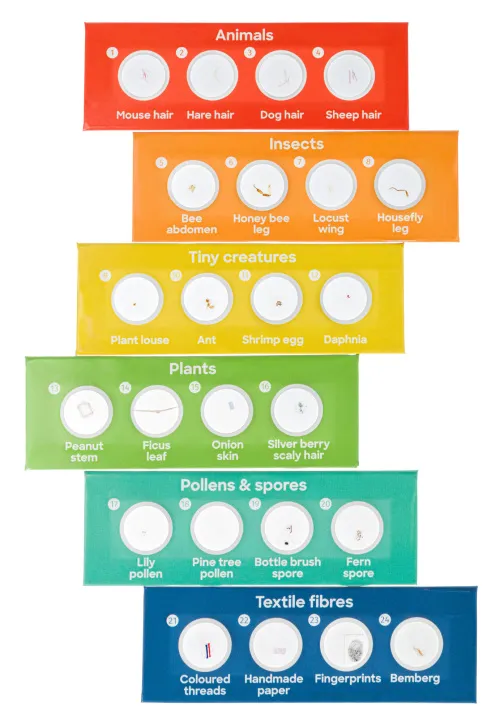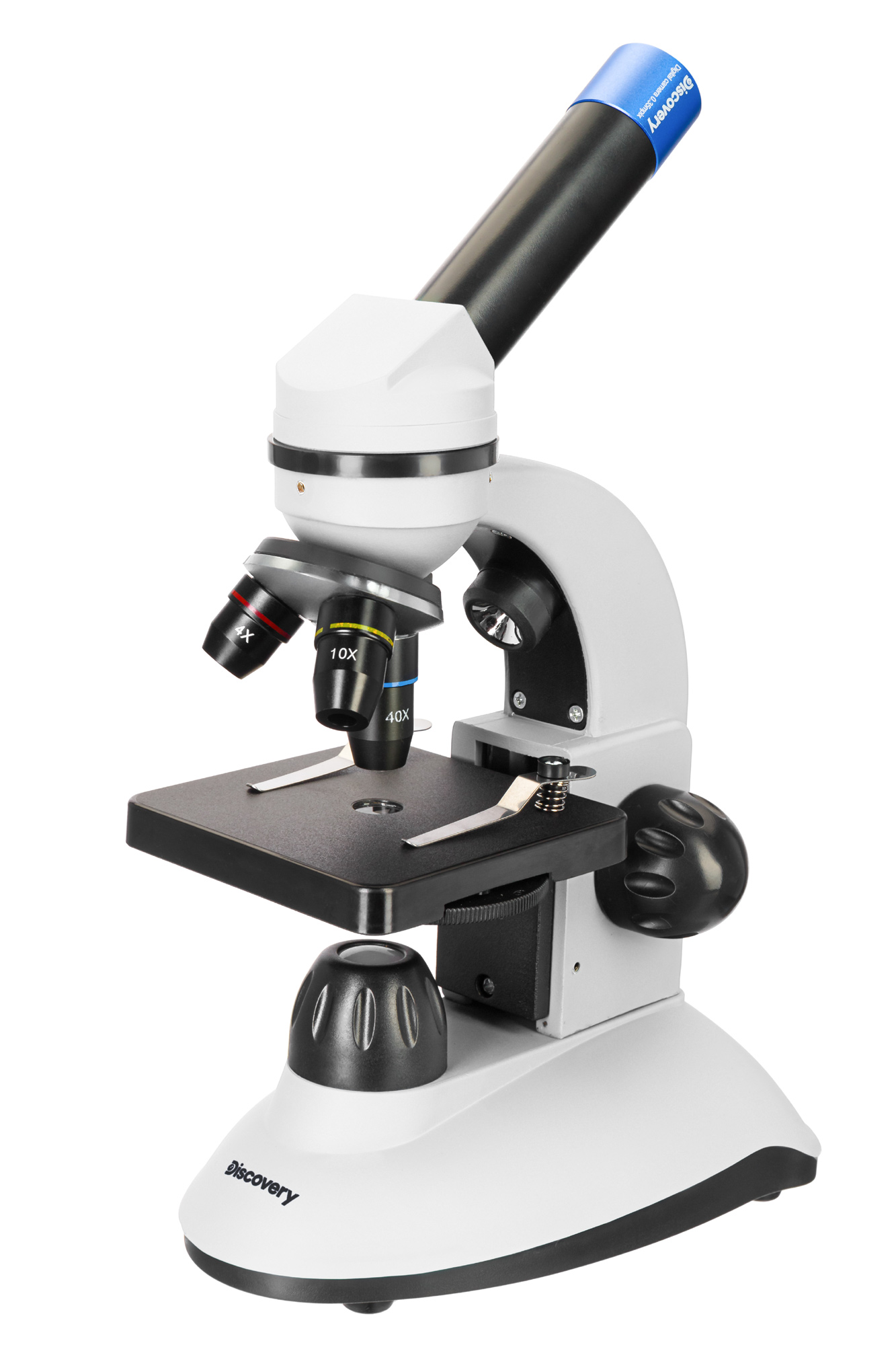Levenhuk Discovery Nano Polar Digital Microscope with book
Monocular. Achromatic Optics. LED Illumination. 0.3MP Digital Camera. Magnification: 40–400x
| Product ID | 77967 |
| Brand | Discovery |
| Warranty | 10 years |
| EAN | 5905555013671 |
| Package size (LxWxH) | 15x33x22 cm |
| Shipping Weight | 1.805 kg |

Discovery Channel informs, entertains and inspires its audiences around the globe about the world in all its wonder, diversity and amazement. Offering millions of people the chance to discover, and satisfy their curiosity, Discovery offers a compelling mix of stories across genres including science and technology, exploration, adventure, history and in depth behind-the-scenes glimpses at the people, places and organisations that shape and share the world we live in.
We proudly present the Discovery optics series that is produced by Levenhuk and endorsed by Discovery.
Check out a brief comparison of the Discovery microscope series »
The Levenhuk Discovery Nano Polar digital microscope is a monocular biological microscope with a 0.3MP digital camera. It can be used both for classic visual observations and for creating digital research archives. The camera enables you to display the picture on the external screen, take photos, and record videos of research. The kit includes an educational illustrated book about the microbial world.
Achromatic glass optics
The optical system includes a 10-x wide-field eyepiece and three achromatic objectives: 4х, 10х, and 40х. The 40x objective is equipped with the protective spring-loaded frame. The magnification range of microscope is from 40x to 400x. Since the optics are made of glass, the device transmits a high-contrast and clear picture, allowing you to study even the smallest details of the samples.
Dual LED Illumination
The illumination system consists of two LEDs that are placed above and under the stage. The illumination flux from the lower LED can be corrected using the diaphragm disks. The illumination is powered by batteries. The stage features sample holding clips.
0.3MP Digital Camera for Photo and Video Recording
The 0.3MP digital camera can be installed instead of the eyepiece and connected to the computer via a USB cable (included in the kit). It requires software installation to work properly. The software CD is included in the kit. Please check the system requirements listed in the specifications. The camera is powered with the USB cable expanding capabilities of the microscope. The maximum resolution is 640x480 pixels, and video can be recorded at a high frame rate: 30 frames per second. Simple image processing is also available (adjusting brightness, image size, etc.).
"Invisible World" Knowledge Book is included
To make exploration of the microbial world even more interesting, we added the "Invisible World" knowledge book in the kit. It tells all about microscopes, protozoa, microbes, fungi, bacteria, and many other objects and creatures that can be studied with a microscope. The book includes descriptions of fascinating scientific experiments that you can conduct yourself.
An important feature of the microscope: it comes with the Levenhuk Discovery Flora and Fauna set that includes 24 prepared slides with specimens.
Features:
- Monocular microscope with a 0.3MP digital camera
- Achromatic optics; magnification: 40–400x
- Dual LED lights are powered by batteries
- For visual observations as well as photo and video recording
- Excellent entry-level biological microscope
- Comes with a colorful knowledge book
The kit includes:
- Microscope
- WF10x eyepiece
- Achromatic objectives: 4x, 10x, 40xs
- Digital camera: 0.3Mpx.
- USB 2.0
- Software CD
- Dust cover
- "Invisible World" knowledge book
- Levenhuk Discovery Flora & Fauna 24 Prepared Slides Set
- User manual and warranty card
| Product ID | 77967 |
| Brand | Discovery |
| Warranty | 10 years |
| EAN | 5905555013671 |
| Package size (LxWxH) | 15x33x22 cm |
| Shipping Weight | 1.805 kg |
| Type | biological, light/optical, digital |
| Microscope head type | monocular |
| Optics material | optical glass |
| Head | fixed (non-rotatable) |
| Head inclination angle | 30 ° |
| Magnification, x | 40 — 400 |
| Eyepiece tube diameter, mm | 23.2 |
| Eyepieces | WF10x |
| Objectives | achromatic: 4x, 10x, 40xs (spring) |
| Revolving nosepiece | for 3 objectives |
| Stage, mm | 90x90 |
| Stage moving range, mm | 0–16, vertical |
| Stage features | with clips |
| Condenser | N.A. 0.65 |
| Diaphragm | diaphragm disc (6 apertures) |
| Focus | coarse (0.5mm) |
| Body | metal, plastic |
| Illumination | LED |
| Power supply | 3 AA batteries (not included) |
| Power supply: batteries/built-in battery | yes |
| Light source type | lower: 0.2W, upper: 0.1W |
| Operating temperature range, °C | -5...+40 |
| User level | beginners |
| Assembly and installation difficulty level | easy |
| Software language | Chinese, English, French, German, Polish, Russian, Turkish |
| Application | school/educational |
| Illumination location | dual |
| Research method | bright field |
| Experiment kit included | ✓ |
| Digital camera included | ✓ |
| Pouch/case/bag in set | dust cover |
| Maximum resolution | 640x480 |
| Megapixels | 0.3 |
| Sensor element | 1/4" CMOS |
| Pixel size, μm | 5.6×5.6 |
| Video recording | yes |
| Image format | *.jpg, *.bmp, *.png, *.tif and others |
| Video format | output: *.wmv, *.avi, *.h264 (Windows 8 and later), *h265 (Windows 10 and later) |
| Spectral range, nm | 380–650 (built-in IR filter) |
| White balance | automatic, manual |
| Exposure control | automatic |
| Frame rate | 30@640x480 |
| Usage location | ocular tube, instead of the eyepiece |
| Method of exposure | ERS (Electronic Rolling Shutter) |
| Software, drivers | LevenhukLite |
| Programmable options | brightness, image size |
| Output | USB 2.0 |
| System requirements | Windows 8/10/11 (32bit and 64bit), Mac OS X, Linux, up to 2.8GHz Intel Core 2 or higher, minimum 2GB RAM, USB 2.0 port, CD-ROM |
| Camera power supply | via USB cable |
and downloads
We have gathered answers to the most frequently asked questions to help you sort things out
Find out why studying eyes under a microscope is entertaining; how insects’ and arachnids’ eyes differ and what the best way is to observe such an interesting specimen
Read this review to learn how to observe human hair, what different hair looks like under a microscope and what magnification is required for observations
Learn what a numerical aperture is and how to choose a suitable objective lens for your microscope here
Learn what a spider looks like under microscope, when the best time is to take photos of it, how to study it properly at magnification and more interesting facts about observing insects and arachnids
This review for beginner explorers of the micro world introduces you to the optical, illuminating and mechanical parts of a microscope and their functions
Short article about Paramecium caudatum - a microorganism that is interesting to observe through any microscope
Having thought of you and your loved ones, Levenhuk and Discovery have rounded up several desirable gifts for this Christmas
Playlist with reviews of telescopes, binoculars, monoculars, microscopes, planetaria, meteorological stations and other Levenhuk Discovery optical equipment
Eager to learn and explore everything around you? If so, consider treating yourself with new optical instruments to get one step closer to the myriad of unexplored wonders of nature that are all around us every day.

